The Method feeder is a deadly stillwater tactic for carp, bream and tench, but loading the feeder the traditional way can be a lengthy process, that's where a Method feeder mould really comes in handy.
This clever device creates a perfect Method ball almost instantly, saving you vital minutes which can be spent catching more fish.
Here we explain how it works and suggest several ways to get the most from your simple yet effective Method feeder mould.
One point that ought to be mentioned immediately is the fact that Method feeder moulds can be used to compress either groundbait or pellets around a frame feeder. Some prefer to use simple groundbait, while the more inventive and creative anglers among you might like to use pellets. Afetr all pellets presented on a feeder has been THE best tactic to use recently.
And what species might you typically catch when using a Method feeder? Well it'll be carp, bream and tench most likely - bottom feeders mainly. But of those three species, carp are the likely candidates to be attracted to the scent of the groundbait or pellets, respond and swim over to take your bait.
Here's how it's done...

1
Empty a bag of 2mm pellets into a suitably sized bait box and cover
them with water (lake water is fine, but tapwater will do).
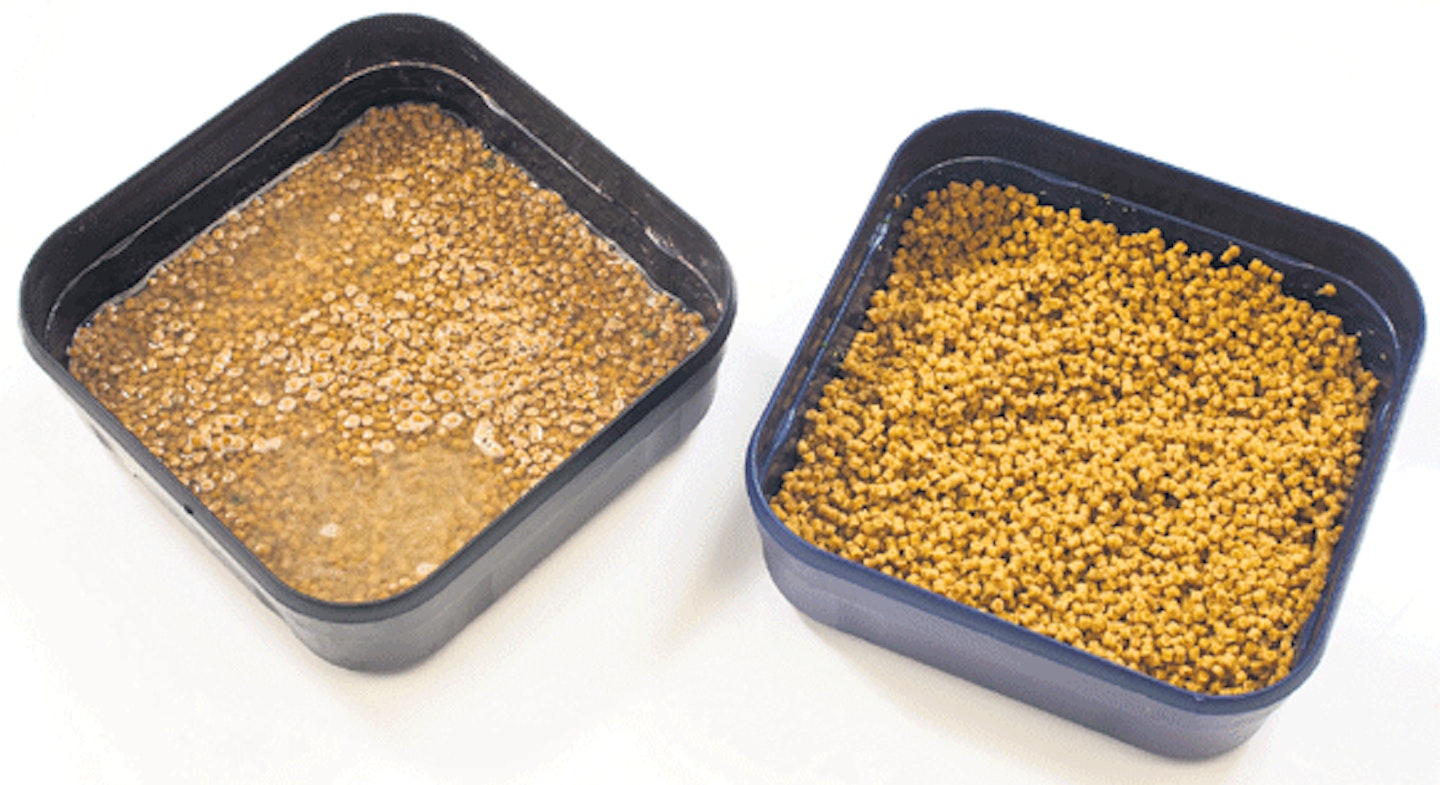
2
Leave the pellets to stand for around an hour to soak up the water. They should be reasonably soft after this and you should be able to squeeze a handful into a ball that holds together. Pellets of this texture are perfect for moulding around the Method feeder.
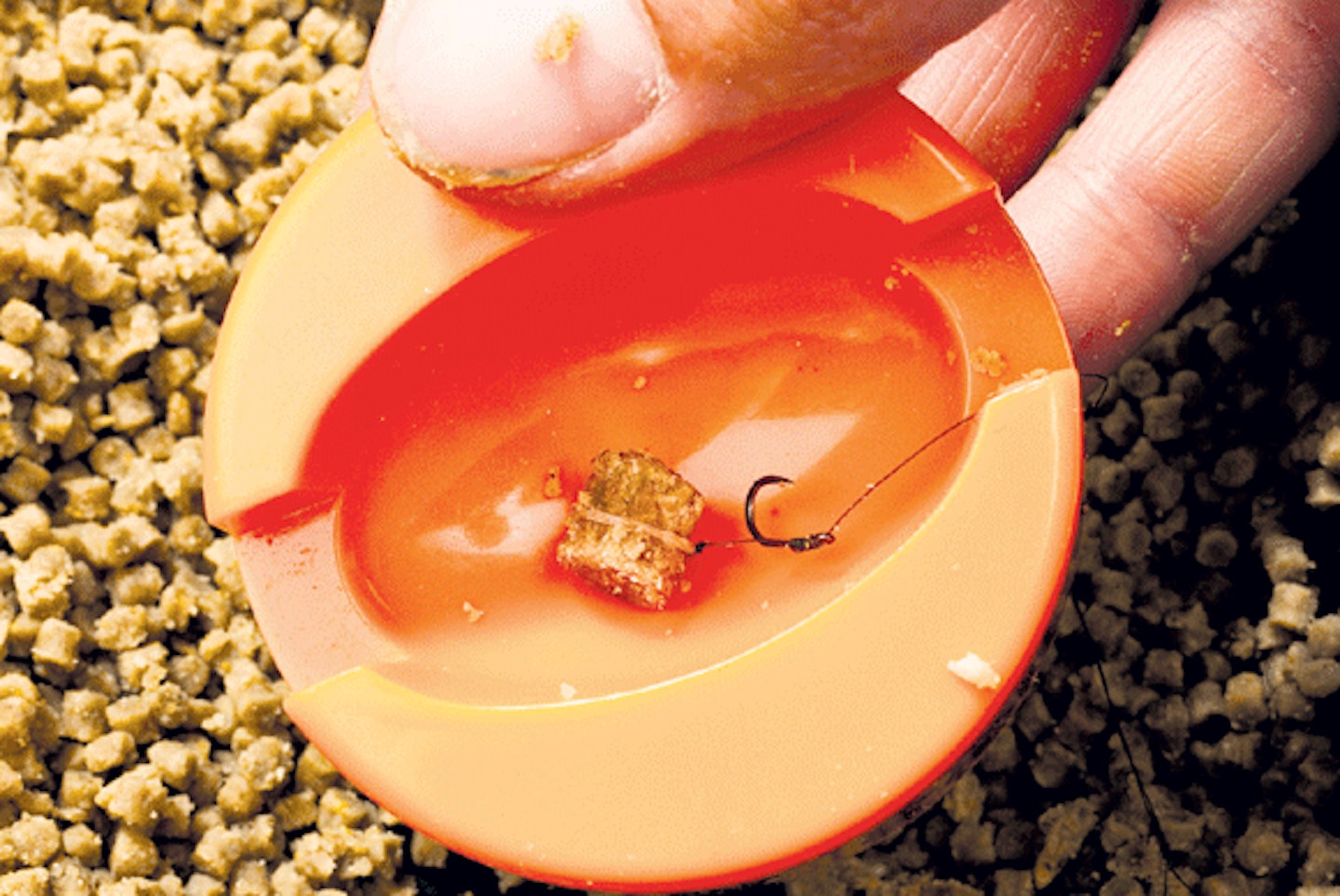
3
Band a 6mm or 8mm hard pellet and place the baited hook centrally into the bottom of your empty Method mould.
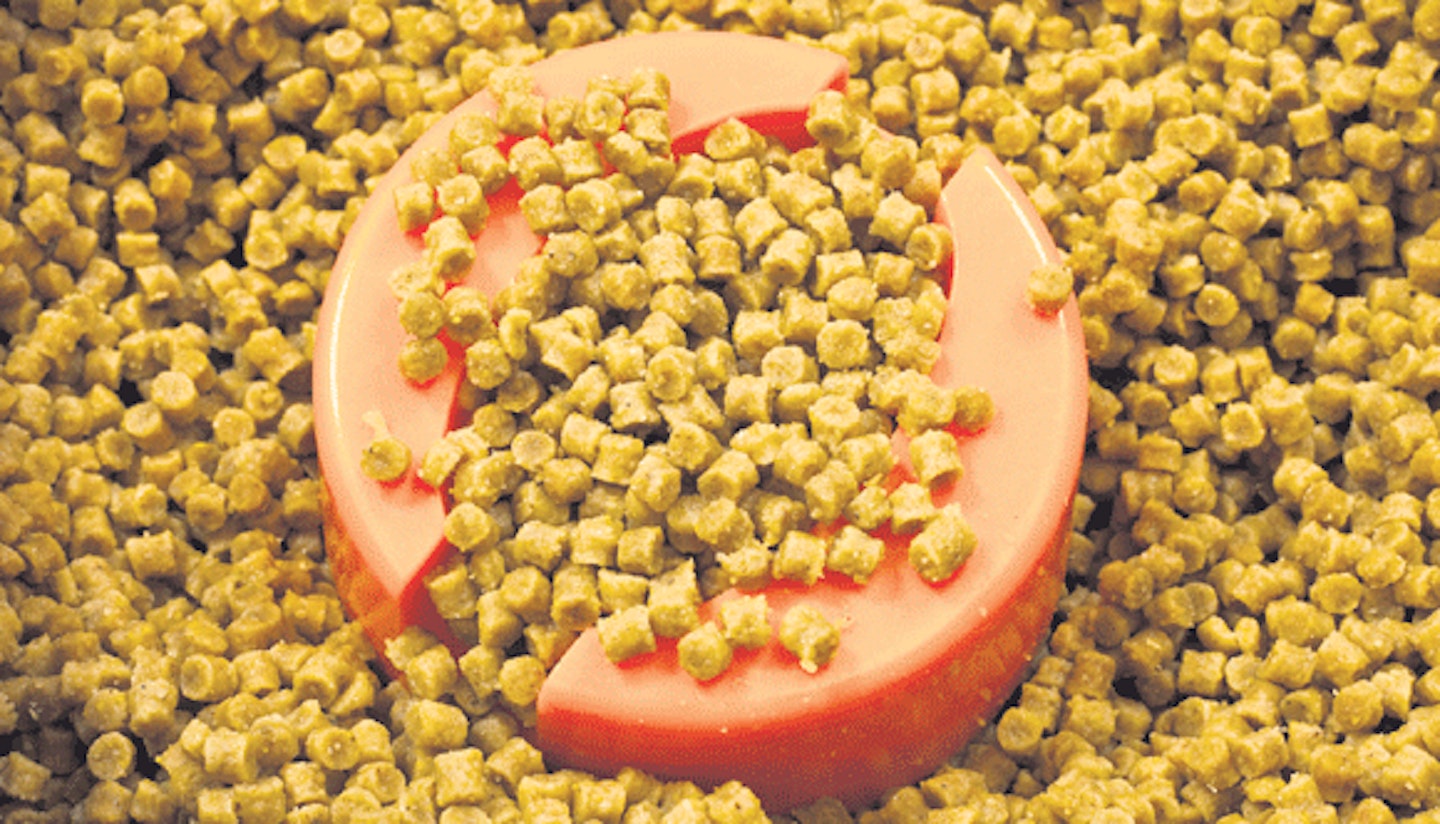
4
Fill the Method mould to the brim with the soaked 2mm pellets. Your hair-rigged hookbait should be buried beneath the pile of bait.
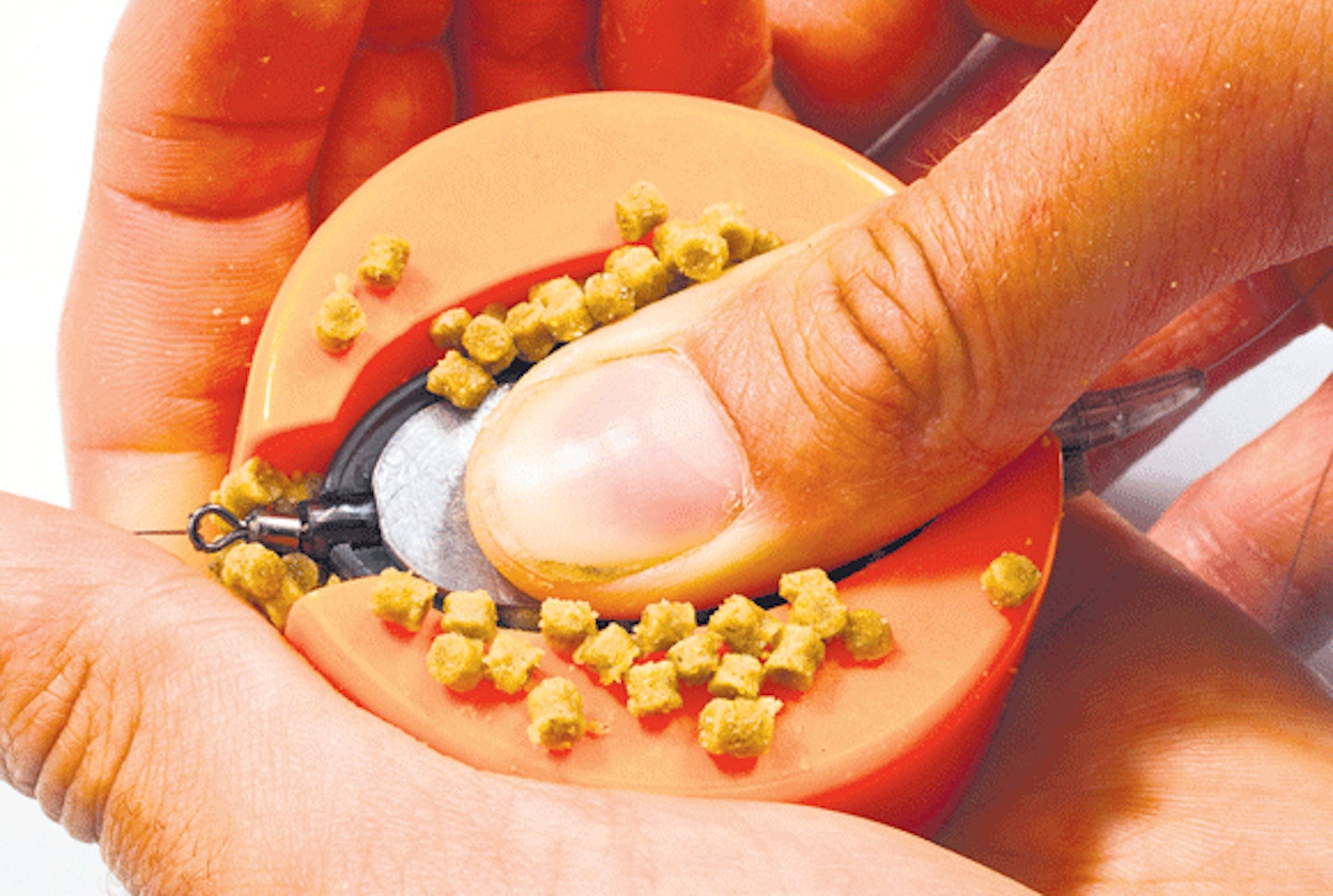
5
Take the Method feeder and gently press it into the mould. This will help the 2mm pellets and your hookbait take on the exact form of the mould every time.
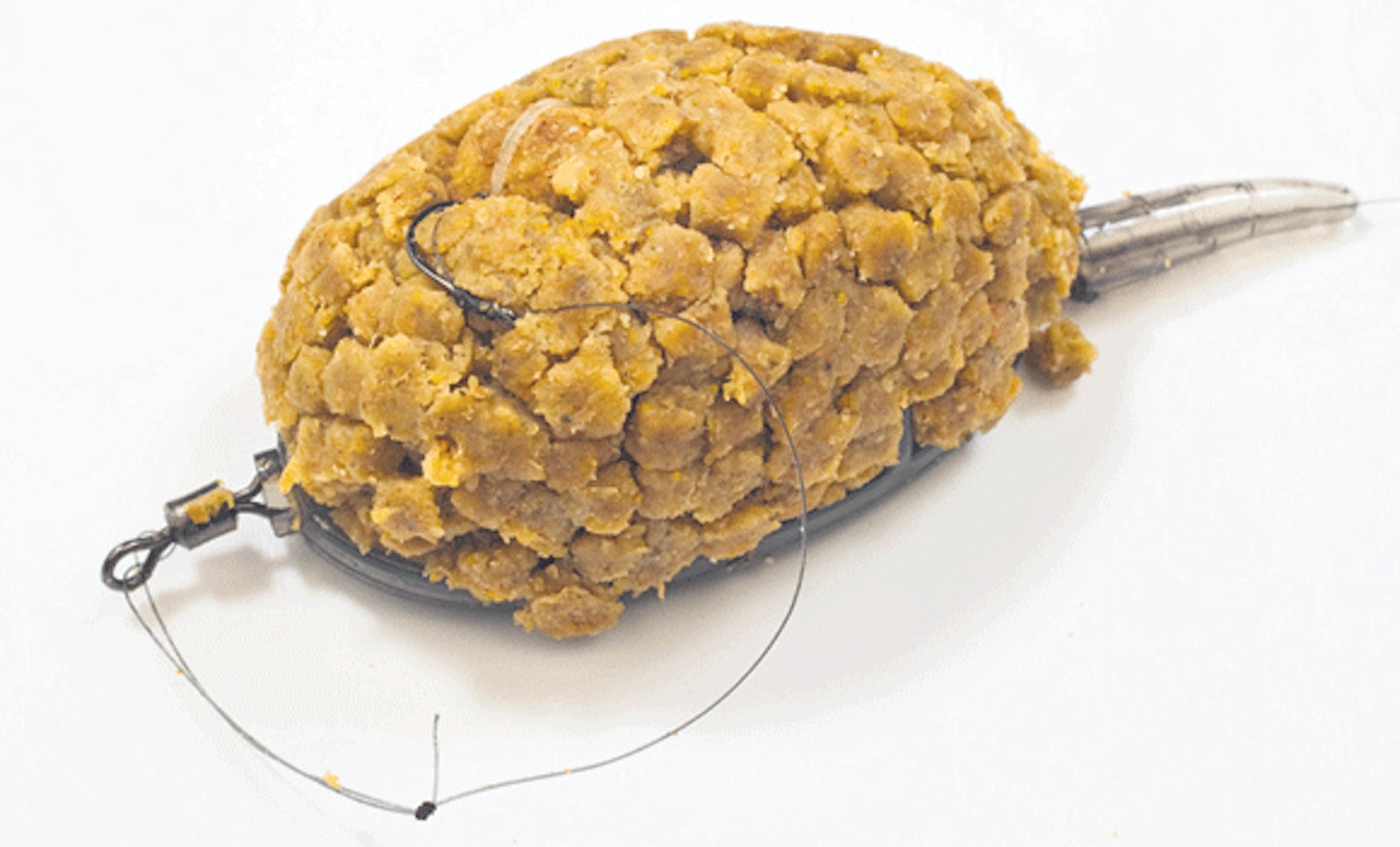
6
The feeder should look like this once out of the mould. Note the hookbait on top of the pile of bait, highly visible to fish and leading to more bites and bigger bags!
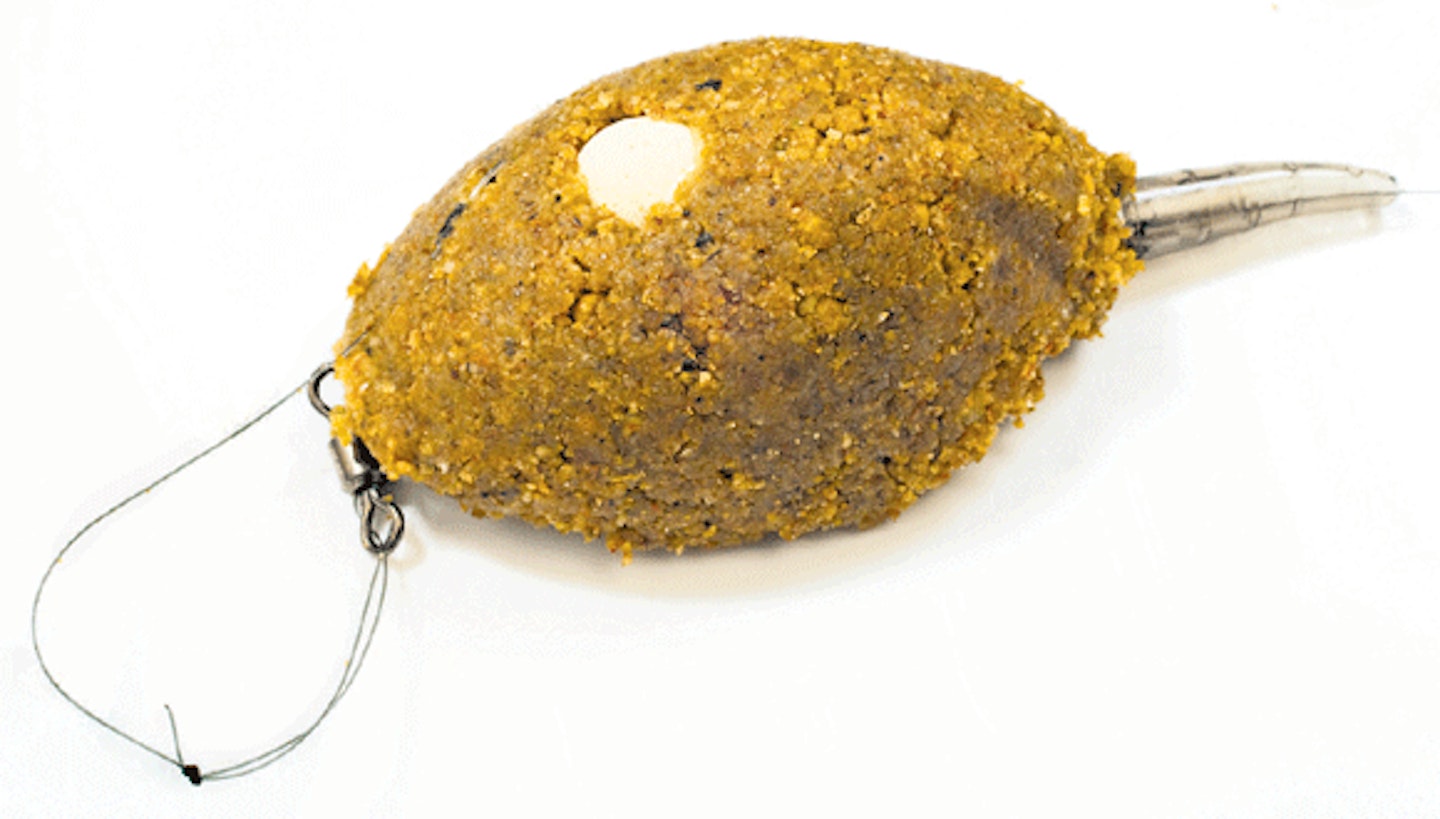
7
Groundbait can also be used with your Method feeder and mould. Specialist groundbaits for Method feederfishing are available, and these should be mixed reasonably wet but not sloppy. It is then a simple matter of following steps 3 to 5 above to help create a neat ball, again with the hookbait fully visible.
TOP 10 METHOD FEEDER TIPS
1
A flat Method feeder is best when feeder fishing close to islands. These usually have a small shelf or slope that the fish patrol. An oval Method ball could easily roll down the slope or off the shelf away from the fish, but a flat Method feeder will stay in the targeted area where they are on the hunt for food.
2
Experiment with the colour of your groundbait or pellets. Try a bright mix or dyed pellets. Dynamite Baits Spicy Tuna and Sweet Chilli benefit from flavour and colour additives that fish will find irresistible!
3
Always use a very short hooklink of between three and four inches. This will allow the fish to slurp the bait up without feeling any instant resistance. Once it does feel the weight of the rig it is too late because the hook will already have taken hold in its mouth.
4
Don’t be afraid to feed via a catapult over your target area. This will add extra bait to the swim and also create a splash which the fish will be attracted to. Feeding large pouchfuls infrequently will help keep the fish on the bottom.
5
Recast your feeder at least every five minutes. If you are not getting bites, this is a great way of building a big bed of bait up in your swim. Once the fish turn up, they will have plenty of loose offerings to feast upon and this should keep them in your swim for a long time.
6
Use the line clip on your reel to achieve consistent distance. At the start of the session, cast to your target area. If you land a few metres short, peel the necessary amount of line off the spool and clip-up. Keep recasting, peeling more line off and clipping-up until you are tight to the fish-holding feature.
7
Your hooklength will be put under a lot of pressure when using the Method and must be strong enough to deal with these rigours. When fishing for carp up to 5lb use 0.18mm or 0.22m for fish that run into double figures.
8
Your hook size will depend on what bait you are using. Use a size 14 for an 8mm pellet or small white boilie, and a size 16 for maggot or corn.
9
Use a hookbait that stands out significantly from your groundbait or pellets. Carp are likely to snap up what they set their eyes on first, and a small white boilie is a great choice. Stand-out alternatives include corn and red meat.
10
Be aware of venue rules. Both in-line and elasticated Method feeders are readily available in all tackle shops but some waters restrict the use of the elasticated versions. Inline Method feeders are permitted at virtually all commercial waters in the UK.
